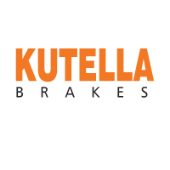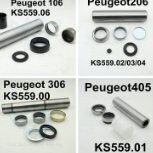-
Welcome to Auto Parts Forum
Whether you are a veteran automotive parts guru or just someone looking for some quick auto parts advice, register today and start a new topic in our forum. Registration is free and you can even sign up with social network platforms such as Facebook, X, and LinkedIn.
RockAuto Promo - Fab Fours Heavy Duty Rear Bumpers
-
Similar Topics
-
By Counterman
The parts industry is a very diverse marketplace. While the landscape is mostly dominated by retail chains and jobber stores serving the general automotive and light truck segment, there are several other specialized parts vendors catering to imports, collision and refinish, powersports, ag and turf, and OEM vehicle brands. Each requires its own unique set of skills, including the heavy truck market.
For many of us behind the counter, our only experiences with heavy trucks are when stock orders are delivered to our stores. Heavy-duty parts specialists work in a very different setting than the “year, make, model” format of retail parts, or the VIN-driven world of a dealership parts department. On those occasions when even a veteran P2-certified parts specialist is presented with a request for heavy-duty parts, we are required to think a little differently and be prepared to dig a little deeper to find solutions.
Trucks are classified by their gross vehicle weight rating (GVWR), with light trucks like Tacoma, Silverado 1500, F-250, and Ram 3500 representing classes 1-3, up to 14,000 pounds. Medium duty (14,001 to 26,000 pounds) covers class 4, 5, and 6, including models like the Ram 4500, F550, and Kodiak 6500. These medium-duty trucks all feature hydraulic brake systems, and are sometimes catalogued alongside their light-duty counterparts. Heavy-duty vehicles, on the other hand, are catalogued primarily by the major components used to build the vehicle.
Heavy duty generally describes class 7 and 8 trucks, with a GVWR over 26,000 pounds. Some class 7 trucks feature hydraulic or air-over-hydraulic brake systems, but the majority of trucks in these two classes rely on air brakes to stop these heavily loaded vehicles. Air brakes operate much like hydraulic brakes, using air pressure instead of hydraulic fluid to apply brake force when the pedal is depressed. Air pressure is created by an on-board compressor, and distributed through a series of valves and tubing to the foundation brakes (disc or drum brake components). Semi-trailers, when coupled to the tractor’s air supply, operate the same way. In case of a drop in air pressure, spring-loaded parking brakes serve as an automatic emergency brake.
Cataloguing foundation brake parts often requires a combination of measurements, identification of manufacturer-specific design elements, and even axle model numbers. Air components require the understanding and identification of thread pitch and sizing, cross-referencing numbers from multiple vendor information sources, and a solid understanding of what each type of valve does within the system.
Engine, drivetrain and suspension components are similarly dependent on how an individual truck was spec’d from the factory. A cement mixer or tri-axle dump truck requires a considerably heavier suspension design than an over-the-road tractor regularly hauling van body trailers full of potato chips. Even within the same model range, a truck manufacturer might offer engines from Cummins, Caterpillar or Detroit, each one mated to one of several manual or automatic transmission options from Eaton, Fuller or Allison. Throw in Rockwell, Eaton or Dana axle packages in one of a dozen different gear ratios, and the combinations become nearly unmanageable.
In our automotive cataloguing, those drivetrain options (and most other parts requests) would generally be found through a simple year/make/model search, but with HD parts, that’s only the beginning. At the dealership level, VIN entry yields a copy of the build sheet or bill of materials (BOM) with the relevant options identified, and OE part numbers called out in the electronic catalog. For aftermarket professionals, its off to various manufacturer catalogs, searching individual component or assembly model numbers and/or serial numbers to collect part information. With more focus on identification of standalone parts that are not necessarily exclusive to one vehicle manufacturer, it simply requires a different approach than what many parts specialists are used to.
There are instances when traditional aftermarket catalog skills come into play, and many of your existing light vehicle vendors also offer HD parts solutions. Your WD or DC might not stock a full line of heavy-duty parts, but many basics like filtration, lighting, belts, rotating electrical and batteries are often only a daily order away. For slower-moving HD-specific parts, special ordering from existing vendors is often a realistic possibility, assuming your customer can absorb the downtime.
Most heavy-duty customers are commercial operators, and time spent waiting on parts is money lost for their businesses and yours. Quick turnaround times for these orders are an everyday expectation in the HD world, so last-moment requests and expedited shipping charges are common. For a parts specialist who enjoys a challenge, the occasional HD parts lookup represents a chance to flex their interchange and cross-reference muscles, and maybe even learn new ways of problem-solving that can be applied to their “regular” daily tasks!
The post
link hidden, please login to view appeared first on link hidden, please login to view.
link hidden, please login to view -
By garryhe
Products Overview
Whether it’s semi metallic brake pads or ceramic brake pads, KETULLA’S expertise and innovation are completely reliable – we have been for over 23 years.
We are one of brake system suppliers and major in manufacturing brake pads for cars in a variety of different cars models, we cover 2351 different types brake pads models– rear brake pads, front brake pads for cars, trucks & Suvs, is your strong and reliable partner supplier.
Your Benefits
In the braking system industry in China our products have obtained a lot of certificates based on its excellent quality. And visually, our brake pad production formula and layer process and quotation are also at the forefront of development in China.
Ketullabrakes brake pads have obtained link hidden, please login to view link hidden, please login to viewcertificates; Up to now, our excellent brake performance has enabled us to obtain cooperation from link hidden, please login to view link hidden, please login to viewaround the world, such as low-dust Ketullabrakes ceramic brake pads, which are very popular in the South American market, demonstrating our product quality control ability. Maximizes our braking power at high speeds and in emergency situations.
-
By Counterman
To hear my mother tell it, getting me up and ready for school in the mornings was an exercise in her patience. I don’t remember it quite that way, but I do recall regularly hearing the phrase “get your rear in gear, or you’re gonna be late!” These days, I’m generally the first person at work in the morning, spending an hour gearing up for the day ahead, and the only rear end gears I have to worry about are inside differential cases.
Identification of an axle/differential generally defaults to the ring gear diameter. Most OEMs refer to their axle assemblies using a combination of callouts, including ring gear, axle manufacturer (corporate, Dana, American Axle, Sterling, etc.) and diff cover bolt count. At the counter, we use these as shorthand for identifying the customer’s needed components. There are generally enough identifying characteristics for us to decide between any available options, but some diffs are a little different.
Dana axles are found in a wide variety of light trucks and SUVs, and are so well-known that we generally catalog parts based solely on the legacy Dana model number (with 30, 35, 44, 50, 60, 70, 80 being the most common), rather than ring gear diameter or cover bolt count. These Dana axles all feature “10-bolt” covers, so that’s a non-starter to an identification conversation. The model 50, 60 and 70 all share a diff cover design, so size and shape won’t help there, either. The Model 50 was used exclusively as a Ford front differential, leaving the 60 and 70 as the only confusing rear option. Identification through casting or tag numbers, when available, is still the best option. Ring gear diameter for each model is as shown here:
MODEL: 30 35 44 50 60 70 80
Diameter: 7.2” 7.562” 8.5” 9” 9.75” 10.5” 11.25”
Dana/Spicer has widely replaced most of these legacy models, and introduced a new model numbering convention. With names like M186, M226, M235 and more, we can now easily determine ring gear diameter, now expressed in millimeters as part of the model number. There can be some confusion, as Dana and the vehicle OEMs continue to refer to the legacy Dana model numbers these new models were based on. Application information continues to be of the utmost importance when selecting between similar Dana configurations!
Most of our differential parts sales are bearings, seals, gaskets and lubricants. Once ring gear diameter has been identified, we are usually in the clear, unless the customer also needs a replacement ring and pinion gear set. When selecting ring and pinion sets, we also require the gear ratio, which can be found by dividing the number of teeth on the ring gear by the number of teeth on the pinion shaft. A differential with a 3.42:1 gear ratio has 41 teeth on the ring gear, and 12 teeth on the pinion gear (41÷12=3.42). To rotate the ring gear (and therefore the wheels) one complete revolution, the pinion shaft (and the driveshaft) must turn 3.42 times. These numbers can be confusing, since “lower” gear ratios are actually represented by larger numbers, and vice-versa. (For example, a truck running 4.10:1 gears is geared lower than the same truck with 3.42:1 gears, even though the first number in the ratio is larger.)
Selecting the correct gear ratio for a stock replacement ring and pinion set is important for two reasons: First, altering the differential gear ratio on a rear-wheel-drive vehicle can affect fuel economy, cruising speed, towing performance, and engine RPM, either running at higher engine RPM (which occurs when a gear lower than the original is installed), or giving up low-end power and torque (which happens when a higher gear ratio than the original is used). The second reason concerns four-wheel-drive vehicles driven on pavement. The front and rear differentials must share the same gear ratio (within approximately 1%), otherwise binding or breakage may occur in the drivetrain, as the two dissimilar gearsets attempt to rotate at different speeds.
For off-road, performance, or racing applications, you may also encounter instances where the customer is changing their gear ratio. Understanding the effects of installing higher and lower ratio gearsets should help you both agree on the appropriate ring and pinion for their particular needs. So, whether you are called upon to supply a single bearing, or to assemble a full assortment of axle components, differential component sales needn’t be “diff”icult!
The post
link hidden, please login to view appeared first on link hidden, please login to view.
link hidden, please login to view -
By austinbearing
Hello, everyone.We are an auto bearing manufacturer from China.
We produce Peugeot, Renault, Fiat and some other aut bearings.
Contact me if you're interested.
WhatsApp: +8613775640157
E-mail: [email protected]

-
By HazelAdam14
Hi truckers,
I'm always on the road; that’s why I have a dire need for a reliable heavy duty truck repair near me. What I need is quick response time with expert technicians who can handle all types of mechanical issues. So, I’d really appreciate it if you can help a heavy duty truck repair near me.
-





Recommended Posts
Create an account or sign in to comment
You need to be a member in order to leave a comment
Create an account
Sign up for a new account in our community. It's easy!
Register a new accountSign in
Already have an account? Sign in here.
Sign In Now